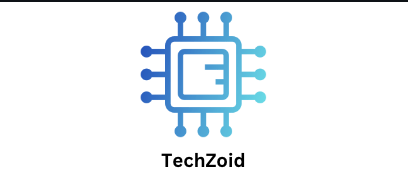Programmatic advertising: What is it?
The automatic purchase and sale of online ad inventory via digital platforms through the use of data, algorithms, and artificial intelligence is known as programmatic advertising. Programmatic advertising uses technology to expedite the process, in contrast to traditional ad purchasing techniques, which involve direct negotiations between marketers and publishers. Advertisers may target certain audiences based on demographics, interests, behavior, and geography thanks to this automation.
Demand-side platforms (DSPs), supply-side platforms (SSPs), ad exchanges, and data management platforms (DMPs) are all part of the intricate ecology that programmatic advertising runs within. When combined, these platforms allow publishers and advertisers to communicate in real time, guaranteeing that the most relevant consumers see the advertising.
What Real-Time Bidding (RTB) is
Real-Time Bidding (RTB), which is the foundation of programmatic advertising, is the method by which ad impressions are purchased and sold through automated auctions that resemble stock exchanges but occurs in a matter of milliseconds. An ad impression is made available for purchase each time a user opens an app or visits a website. Real-time bidding amongst advertisers for that impression results in the user seeing the ad of the highest bidder right away.
While a webpage or app is loaded, the full RTB process takes place in 100–200 milliseconds. Because bidding decisions are based on real-time data, including device kind, browsing history, and user activity, this dynamic approach guarantees that advertising are extremely relevant to each individual user.
The Operation of RTB
A smooth interplay between a number of important entities powers the RTB ecosystem:
The proprietor of an app or website that offers ad space is known as the publisher.
One technology that aids publishers in managing, selling, and optimizing their ad inventory is the Supply-Side Platform (SSP).
Ad Exchange: Real-time auctioning of ad impressions in a digital marketplace.
Advertisers utilize a technology called a demand-side platform (DSP) to automatically purchase ad impressions based on predetermined budgetary constraints and targeting parameters.
Advertiser: The company or brand looking to show their advertisements to the right people.
The RTB procedure goes like this:
The SSP notifies the ad exchange of an ad request when a user visits a webpage.
After that, an auction is held by the ad exchange between several DSPs that represent various advertisers.
Every DSP evaluates user information and bids according to the advertiser’s value of the impression.
The ad is immediately shown on the user’s screen when the highest bidder wins.
The highest level of accuracy and efficiency in ad distribution is guaranteed by this transparent, automated method.
RTB Programmatic Advertising Advantages
RTB provides publishers and advertisers with a number of benefits.
1. Cost-effectiveness: By only paying for impressions that reach their intended demographic, advertisers cut down on unnecessary expenditure.
2. Real-Time Optimization: Since RTB uses real-time data, campaigns may be rapidly modified to boost ROI and performance.
3. Enhanced Targeting: By utilizing first-party and third-party data, RTB makes it possible for extremely precise targeting, giving marketers the ability to connect with consumers based on their purpose, activity, and interests.
4. Increased Transparency: Advertisers may monitor the efficacy of each campaign, the location of their advertising, and the cost per impression.
5. Higher Publisher Revenue: By enabling several advertisers to place competing bids for every impression, RTB helps publishers get the most out of their ad inventory.
RTB Advertising Difficulties
RTB has drawbacks in spite of its advantages. Concerns about data privacy, brand safety, and ad fraud continue to be major obstacles. While improper ad placements can damage a brand’s reputation, fraudulent impressions, bots, and phony visitors can deplete advertising budgets. Additionally, advertisers need to make sure that user data is gathered and handled in an ethical manner in light of growing rules like the CCPA and GDPR.
Nonetheless, the integrity of RTB systems is steadily being reinforced by developments in blockchain verification, machine learning, and enhanced fraud detection technologies.
Conclusion
By fusing automation, data intelligence, and precise targeting, Real – Time Bidding has changed the face of digital advertising. Through competitive bidding, it allows publishers to optimize income while giving advertisers the ability to target the appropriate consumers at the right time. RTB is becoming more open, effective, and secure despite increasing technical developments. RTB programmatic advertising is a key component of online marketing’s future as digital ecosystems develop further, enabling more intelligent, effective, and quick brand communication.
